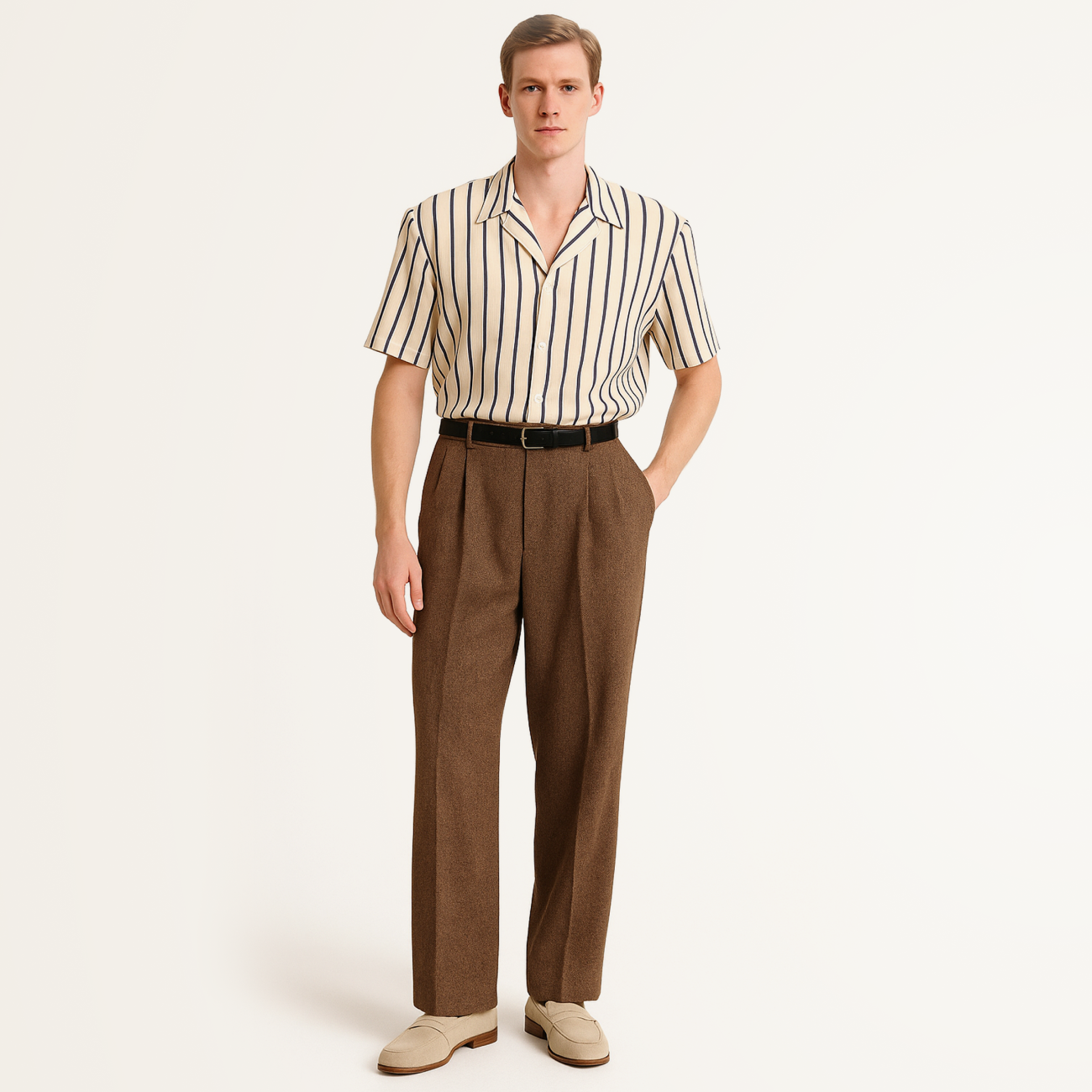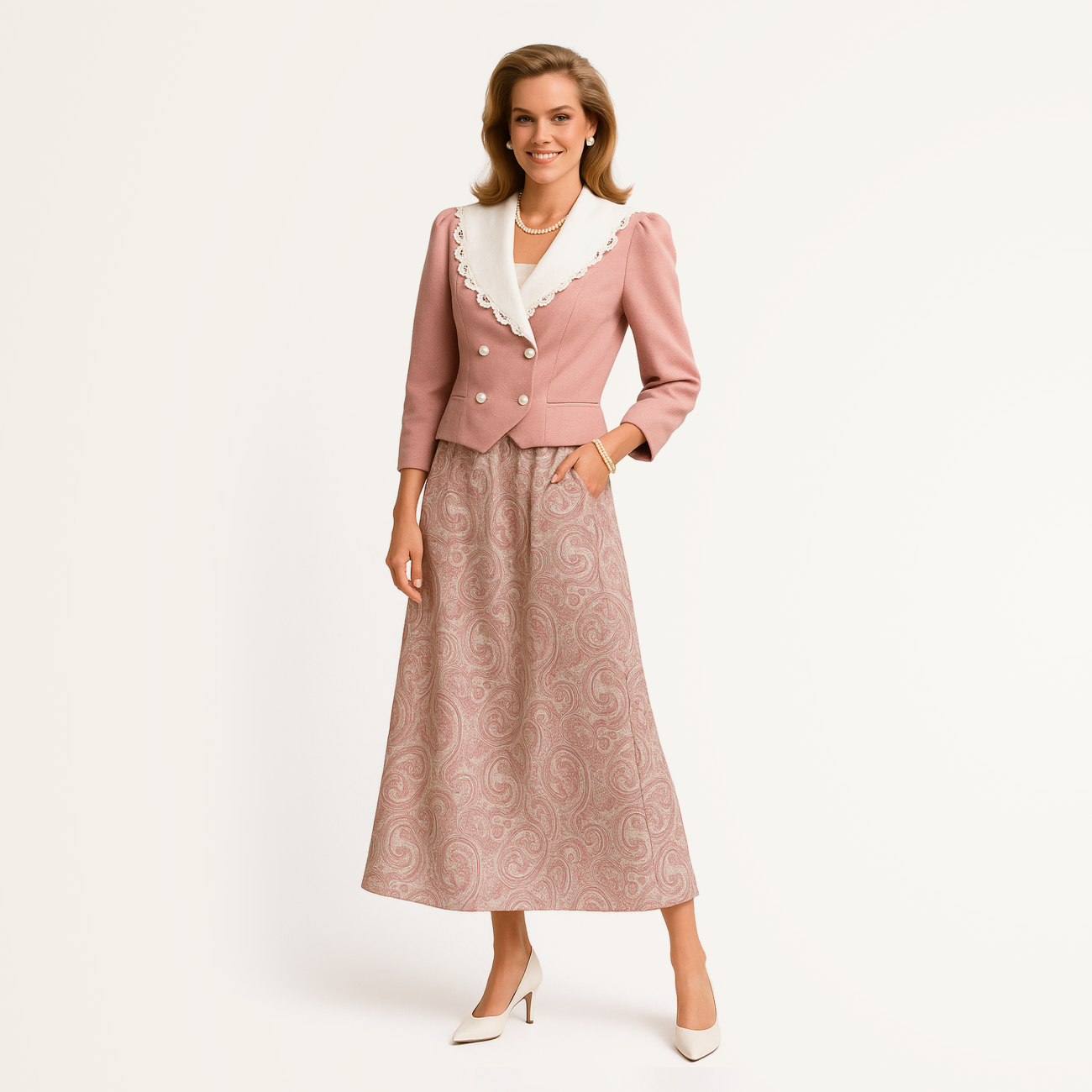Retro
Retro style is a look into the past through the lens of fashion — a return to aesthetics that carry the legacy, classic elegance, and refinement of the early 20th century. This style values beauty and form, creating the atmosphere of a time when clothing reflected changing eras — from post-war glamour to industrial simplicity and the rise of mass culture. Retro is for those who wish to express themselves through stylish historical references, where every piece in the wardrobe tells a story.
History
Retro is about embracing the spirit of past decades — a return to the aesthetics and silhouettes that once defined fashion. This style embodies garments that closely replicate or are inspired by the cuts and details characteristic of different eras of the 20th century. While many associate retro with the period from the 1920s to the 1950s, it actually includes later decades as well — from the free-spirited '60s to the bold and vibrant '90s.
Each decade brought its own distinctive traits and stylistic highlights:
The 1920s introduced flared dresses with fringe and beads, reflecting the spirit of jazz and liberation.
The 1930s shifted toward softer and more elegant silhouettes.
The 1940s emphasized strict lines and functionality, shaped by wartime reality.
The 1950s celebrated femininity and refinement, popularizing the hourglass silhouette with a cinched waist.
The evolution continued:
The 1960s brought mini dresses and geometric prints.
The 1970s offered flared trousers and ethnic motifs.
The 1980s dazzled with bold colors and padded shoulders.
The 1990s introduced sporty influences and grunge elements.
Retro is a unique opportunity to craft a look that reflects the style and essence of a particular era, while seamlessly adapting it to the present day. It not only highlights individuality but also offers a way to express one’s connection to history and cultural shifts. Choosing retro means reviving the charm of fashion’s past — and adding a nostalgic note to every outfit.
Signature elements of the style
Color palette
The retro color palette of the early 20th century ranges from the deep, rich hues of the 1920s — such as burgundy, emerald, black, and gold — to the softer pastels and neutral tones of the 1940s. The 1950s introduced brighter, more vivid colors like red, pink, blue, and yellow, reflecting the optimism and post-war recovery.
Prints
Retro prints often reflect the spirit of their respective decades. The 1920s featured geometric patterns and Art Deco motifs. In the 1930s and 1940s, floral patterns and delicate small prints became fashionable, embodying elegance and gentleness. The 1950s brought bold designs such as polka dots and checks, highlighting femininity and playfulness.
Textures
Fabrics from the early 20th century include silk, velvet, satin, tweed, and wool. The 1920s favored light, flowing materials that enhanced the feminine silhouette. During the 1930s and 1940s, under the influence of practicality, textiles became denser and more structured. The 1950s saw the return of soft and smooth fabrics, along with the introduction of synthetic materials.
Cuts & silhouette
Retro silhouettes are marked by their variety and elegance. The 1920s featured loose-fitting dresses with dropped waists, expressing the spirit of liberation. In the 1930s, the silhouette became more feminine, with a defined waist and soft, flowing lines. The 1940s reflected wartime austerity with stricter, more practical garments, while the 1950s reintroduced the classic hourglass shape with a strong emphasis on the waist.
Wardrobe essentials
- Wardrobe pieces in retro style will vary depending on the era used for inspiration.
Substyles
Email: support@belt-app.com


















